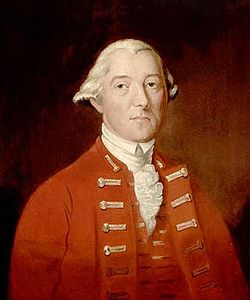| 53rd Regiment of Foot | |
|---|---|
 Colours of the 53rd Regiment | |
| Active | 1755–1881 |
| Country | |
| Branch | |
| Type | Infantry |
| Size | One battalion (two battalions 1803–1817) |
| Garrison/HQ | Copthorne Barracks, Shrewsbury |
| Nickname(s) | "Old Five & Threepennies" [1] "Brickdusts" "Red Regiment" |
| Colors | Red Facings |
| Engagements | American Revolutionary War French Revolutionary Wars Napoleonic Wars First Anglo-Sikh War Second Anglo-Sikh War Indian Rebellion |
| Commanders | |
| Notable commanders | William Whitmore Sir John Abercromby |
The 53rd (Shropshire) Regiment of Foot' was a British Army regiment, raised in 1755. Under the Childers Reforms it amalgamated with the 85th (King's Light Infantry) Regiment of Foot to form the King's Shropshire Light Infantry in 1881.


